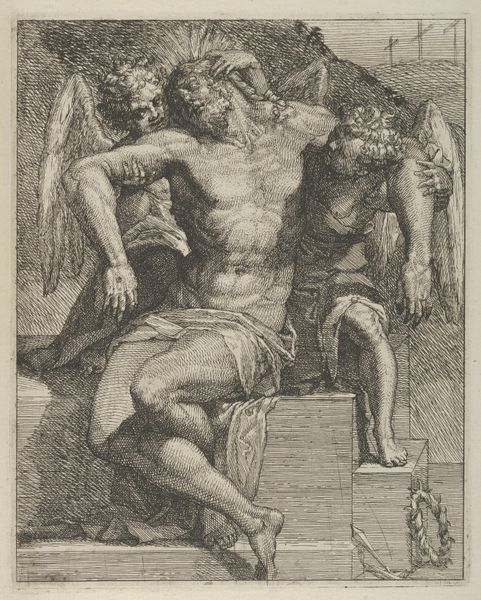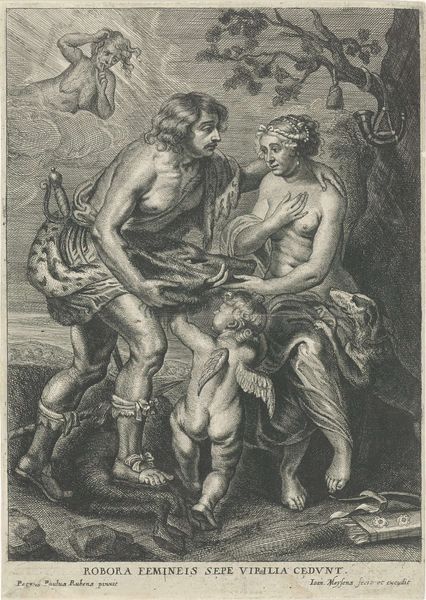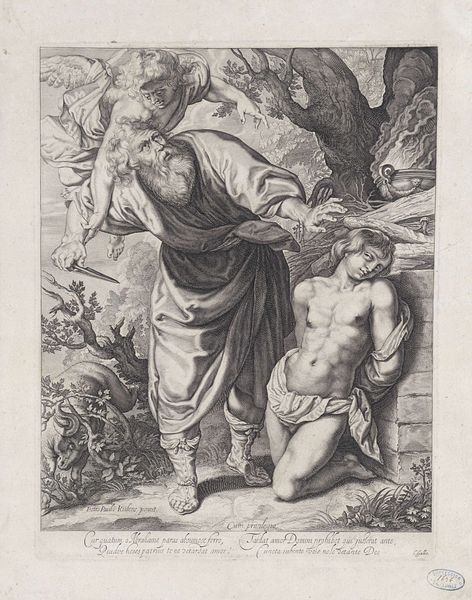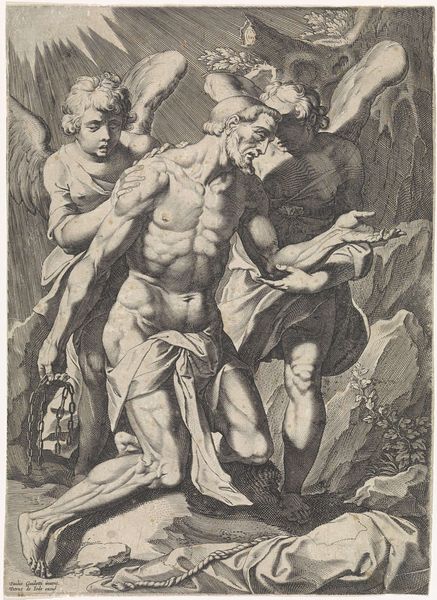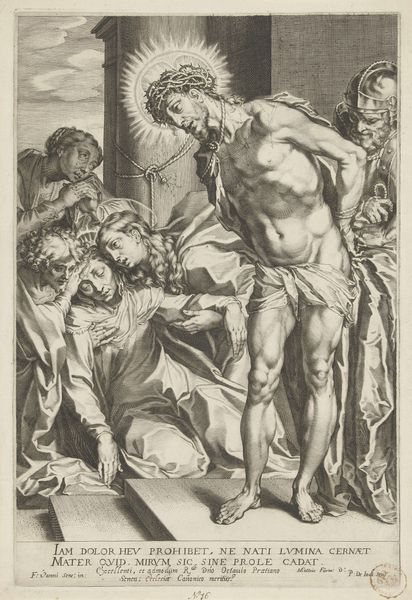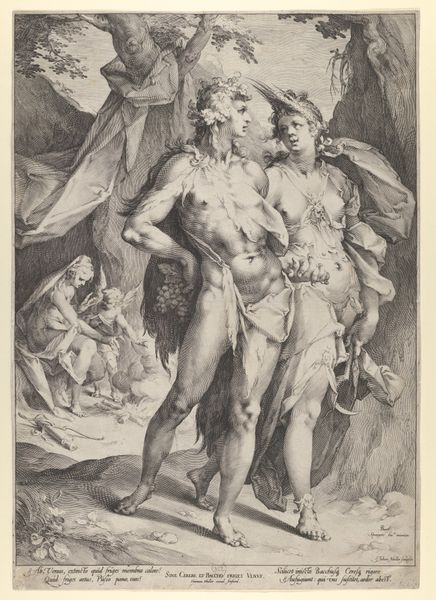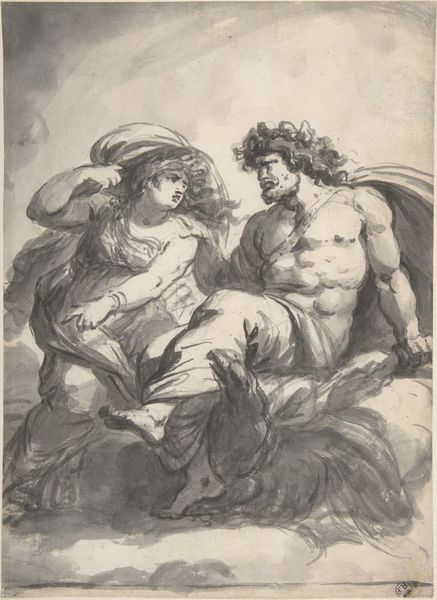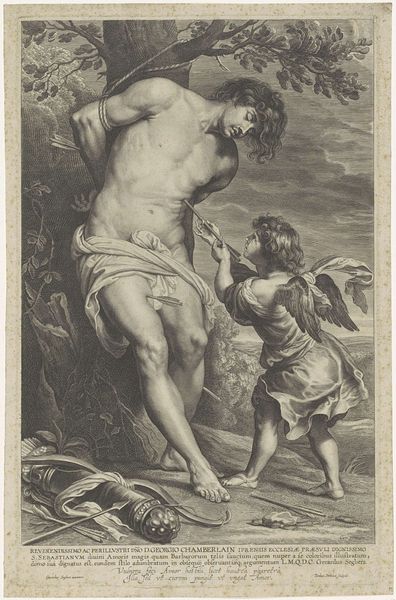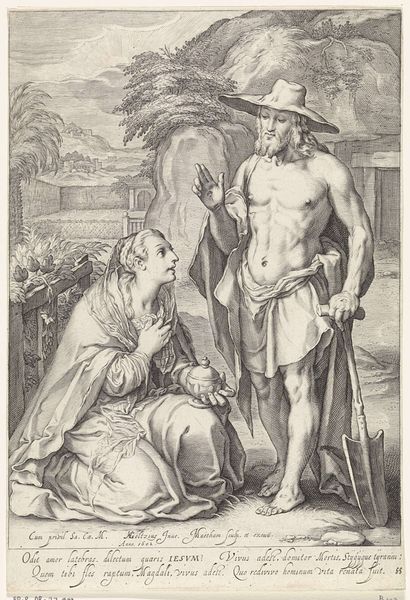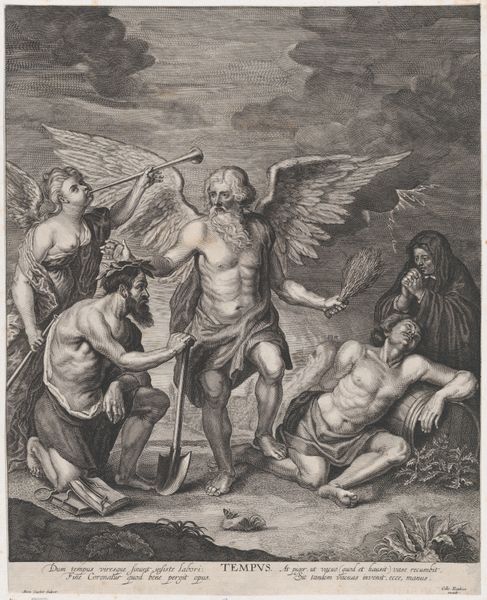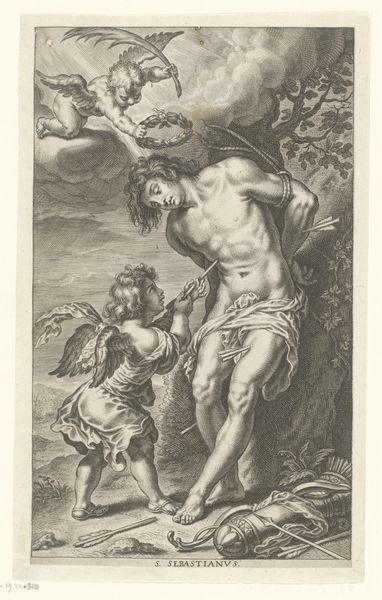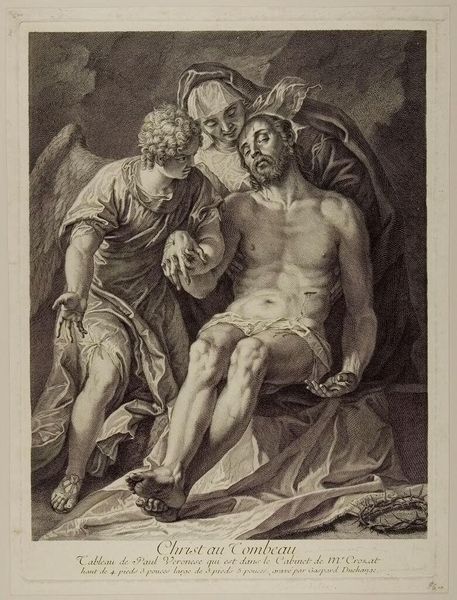
Dimensions: Sheet (Trimmed): 15 3/16 × 12 3/16 in. (38.5 × 30.9 cm)
Copyright: Public Domain
Curator: Here we have an engraving, made in 1768 by Carlo Faucci, titled “Bacchus accompanied by a Bacchante and a faun.” Editor: My first impression is that this party looks a bit… intense! It's got a touch of menace. That central figure, Bacchus, isn’t exactly radiating good cheer, is he? More like bacchanalian… possession? Curator: The print is based on an earlier painting by Rubens. Think about how the engraving process transforms the original. Here, it emphasizes line and contour, creating a dramatic contrast of light and shadow. Faucci masterfully translates Rubens’s characteristic lushness into a starker visual language. Editor: Absolutely. It's fascinating how the lack of color shifts the emotional tone. In the monochrome, every symbolic element feels heightened. The grapes, for instance. They’re no longer just fruit; they’re heavy with implications of indulgence, of… Dionysian frenzy. And look how everyone is placed—that half beast faun with the plate almost mocking you. Curator: Precisely. This goes to the heart of Bacchic symbolism. The wine, the ecstatic dance, the blurring of boundaries between human and animal… These are all metaphors for breaking free from societal constraints. Consider, too, the erotic undertones so prevalent in baroque art of that time. The bacchante's loose drapery and come-hither look add another layer to the sense of uninhibited abandon. Editor: It's almost overwhelming, that feeling. Do you think viewers back then understood these symbols the same way? Did they experience the same push and pull between fascination and fear when faced with such depictions of raw emotion? Curator: Cultural memory is powerful. These symbols resonate even when their original context fades. We may not engage in Bacchic rituals today, but we certainly recognize the human desire to escape, to lose control, to push boundaries. Editor: Well said. For me, beyond the historical or art historical context, the print offers a potent meditation on the tension between order and chaos, between reason and instinct. Curator: Yes, and it makes one ponder the nature of liberation. Is it truly freedom if it exists outside reason and societal harmony?
Comments
No comments
Be the first to comment and join the conversation on the ultimate creative platform.
